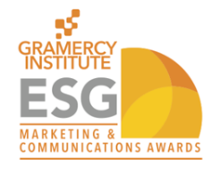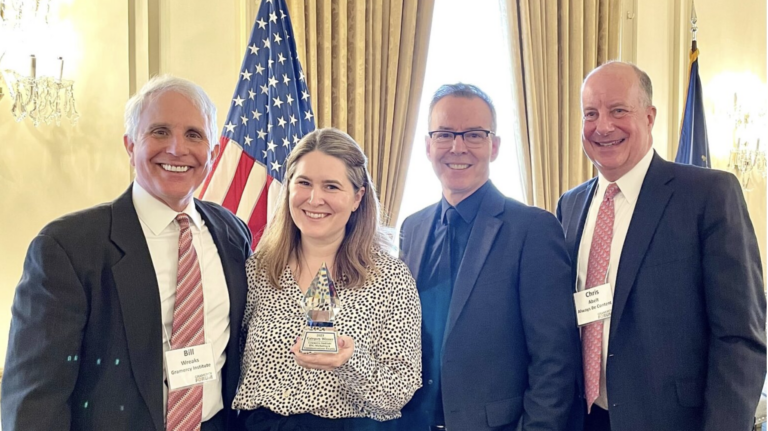In recent years, asset managers have channeled vast amounts of capital into ESG-focused equities and investment funds. Partly, it’s due the growing global awareness, interest and concern about ESG-focused issues. But it’s mostly because there’s compelling evidence that companies which do better environmentally, socially and administratively tend to do better financially.
In October 2022, PwC reported that ESG-related assets under management (AUM) are expected to grow to $33.9 trillion USD by 2026 – from $18.4 trillion in 2021. With a projected compound annual growth rate (CAGR) of 12.9%, ESG assets are on pace to constitute 21.5% of total global AUM in less than 5 years.
There’s proof that ESG factors can (and usually do) have a positive material impact on a company’s performance. In essence, higher returns suggest that companies can indeed do well (financially) by doing good (supporting positive ESG oriented business strategies).

This trend begs the question: have corporate ESG-oriented marketing and communications efforts been able to keep pace with this growth?
Recently, the New York City based Gramercy Institute held its ESG Marketing & Communications Awards. The global financial services marketing think tank held the event in New York, coupled with panel discussions from leading financial services marketers and agencies. Experienced CMOs and industry thought leaders shared their thoughts on best practices for ESG-related marketing and communications.
Gramercy Institute CEO Bill Wreaks (right) kicked off the event noting that ESG issues impact financial marketing & communications in a wide variety of ways. ESG provides a new metric of analysis beyond growth and return. Beyond the classic investor motivations of ‘fear and greed‘, ESG can also appeal to people’s higher principles and emotional needs, creating opportunities for enriched storytelling in marketing efforts.

Wreaks noted “What is an ESG-focused company really? Lots need to be figured out. Marketers need to create the right messages to help balance ESG considerations with financial returns.” He added “This will allow companies to focus on things (ESG) that are of interest and really matter to people.”
Elizabeth Coleman-Chen, Executive Director / Head of Strategic Content Marketing for Alternatives and Sustainable Investing at Morgan Stanley, observed “ESG is not an asset class. It needs to be viewed on a continuum across all asset classes. Think of it in terms of ESG factors and the impact they have.” She also stressed the need to create authentic ESG content. The key focus is on what you are doing and how you are doing: use case histories, rather than generic ESG brochureware.
Jan Deahl from Drake Star (global tech investment bank) observed that “Financial services tends to be a very commoditized industry. Firms need to be authentic and bold in their ESG and brand messaging versus simply saying what everyone else is saying.” He noted “Employees can be powerful brand ambassadors – which is currently a huge, missed opportunity.” Adding “They need to have a clear understanding of what the brand is all about, in order to provide a consistent message.”
Katy Brady, Director of Brand and Content at Invesco, also noted that “Brands need to tell a compelling story that creates an emotional bond.” She added “At Invesco, our brand is equated to a great reputation that helps build trust, especially among financial advisors. This makes them feel comfortable recommending Invesco to their clients.”
Jim Casey who is VP, Digital & Creative at Selective Insurance said “Brand trust is hard to earn and easy to lose. You are either part of the ESG conversation or you have your head in the sand. Brands can’t really be controlled. Everything is changing with B2B social media and AI. Our thinking as marketers needs to evolve as well.”
Dan Tauber, Director of Marketing / Managing Director at Macquarie Asset Management, Alternative Investments observed “Content delivery is important. You need to make it easy to consume. It also needs to be action-oriented, and tied to a relevant product offering. We aim to make our content different by providing something unique and interesting, not just adding to the noise.”
Lou Cohen, Digital Marketing & Demand Leader from EY focused on the implication of AI on financial services marketing, saying that “It will enhance delivery of personalized and ad targeting, allowing for content optimization between the message and the target audience.”
Cohen did caution that “With AI there will be a need to solve the underlying data problem.” This is around data quality. Incomplete, inaccurate, or outdated data can lead to misleading insights and ineffective marketing efforts. Data bias – AI models are trained on historic data that can perpetuate biases in decision making). Simply insufficient data to allow AI to make accurate predictions and generate valuable insights.
The Gramercy Institute ESG forum culminated with the presentation of the ESG Marketing & Communications Awards. Best of Show went to State Street Corporation for their “Future of ESG.” Always Be Content was awarded for the Marketing Strategy behind the “Dare to Care”, our guide to sustainability basics in marketing communications.

Share and tag us @alwaysbecontent








